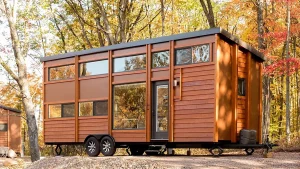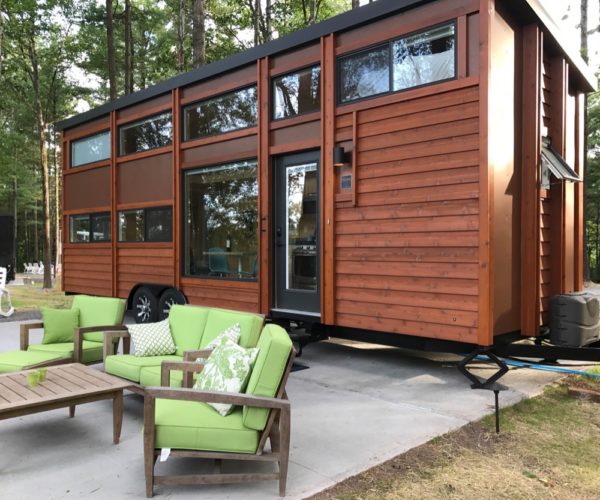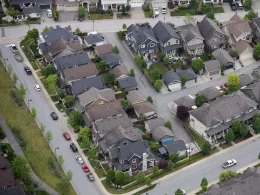Compact Living, Massive Trend: The Tiny House Movement
Introduction:
Greetings, I’m David Simon, a seasoned real estate expert with over two decades of industry experience. Join me as we embark on a captivating journey into the world of the Tiny House Movement. In this article, we’ll delve into the reasons behind its monumental rise and how these compact homes are influencing buyer preferences, affordability, and sustainability in the realm of real estate.
The Tiny House Revolution
In recent years, the Tiny House Movement has evolved from a fringe concept into a massive trend that’s reshaping the real estate landscape. Let’s unravel the key factors driving its surge in popularity and why it’s capturing the imagination of individuals seeking a simpler, more sustainable lifestyle:
Embracing Minimalism
In a world where materialism often takes center stage, the Tiny House Movement offers a breath of fresh air in the form of minimalism. It encourages individuals to declutter their lives, focusing on experiences and quality of life over possessions. By downsizing, homeowners can reduce their ecological footprint and attain financial freedom.
Affordability and Financial Freedom
One of the most compelling aspects of tiny homes is their affordability. With significantly lower costs compared to traditional homes, they provide an avenue for a wider demographic to achieve homeownership. This financial freedom empowers people to allocate their resources towards meaningful experiences rather than excessive possessions.
Sustainable Living
Tiny houses are inherently eco-friendly. Their reduced size leads to lower energy consumption, decreased waste production, and often the use of sustainable materials. This aligns perfectly with the global commitment to sustainability and responsible living.
Mobility and Freedom
Many tiny homes are built on wheels, offering residents the freedom to travel or relocate without the constraints of traditional homeownership. This mobility is ideal for those with an adventurous spirit or those who seek a change of scenery without the hassle of selling property.

Key Benefits of Tiny House Living
Tiny houses offer an array of benefits for those who choose this lifestyle:
Table: Key Benefits of Tiny House Living
| Benefit | Description |
|---|---|
| Affordability | Lower cost of ownership and reduced expenses |
| Minimalism | Simplified, clutter-free living |
| Sustainability | Reduced environmental impact |
| Mobility | Freedom to travel and explore |
| Community | Strong, like-minded communities |
Shaping the Real Estate Landscape
The influence of the Tiny House Movement extends far beyond individual homeowners. It has ushered in remarkable changes in the real estate industry:
Reevaluation of Homebuyer Priorities
As the movement gains momentum, homebuyers are reassessing their priorities. Square footage is no longer the sole focus; sustainability, mobility, and community living are taking center stage in the homebuying process.
Niche Markets and Investments
Real estate developers and investors are capitalizing on the growing demand for tiny houses. Communities dedicated to tiny living are emerging, offering a unique investment opportunity. These developments cater to a niche market that values simplicity and sustainability.
Overcoming Regulatory Challenges
The acceptance of tiny houses has faced challenges, particularly from zoning laws and building codes that often need adaptation to accommodate these innovative homes. Advocacy and policy changes are vital to further promote the movement and adapt to the evolving real estate landscape.
Expert Insights: Sarah Mitchell, Advocate for Sustainable Living
To gain deeper insights into the Tiny House Movement and its environmental implications, I had the privilege of speaking with Sarah Mitchell, a distinguished advocate for sustainable living. With a master’s degree in environmental science and a TED Talk on sustainable living boasting over 2 million views, Sarah is a respected authority in this field.
Sarah underscored the significance of conscious consumer choices and the role tiny houses play in reducing our carbon footprint. She stated, “Tiny homes serve as a tangible example of how we can live more sustainably, with less impact on our planet. They inspire us to question our consumer habits and strive for a greener future.”
Conclusion:
In a world where “bigger” has often been synonymous with “better,” the Tiny House Movement challenges this conventional wisdom. It encourages us to rethink our priorities and embrace a simpler, more sustainable way of life. As we’ve explored the rise of tiny homes and their impact on the real estate landscape, it’s evident that this movement is not merely a trend—it’s a revolution that’s reshaping the future of homeownership.
Whether you’re contemplating downsizing or simply curious about this minimalist lifestyle, the Tiny House Movement has undeniably left an indelible mark on our society. Embracing the tiny home philosophy may just be the key to unlocking a more fulfilling, sustainable, and community-oriented future in real estate.












